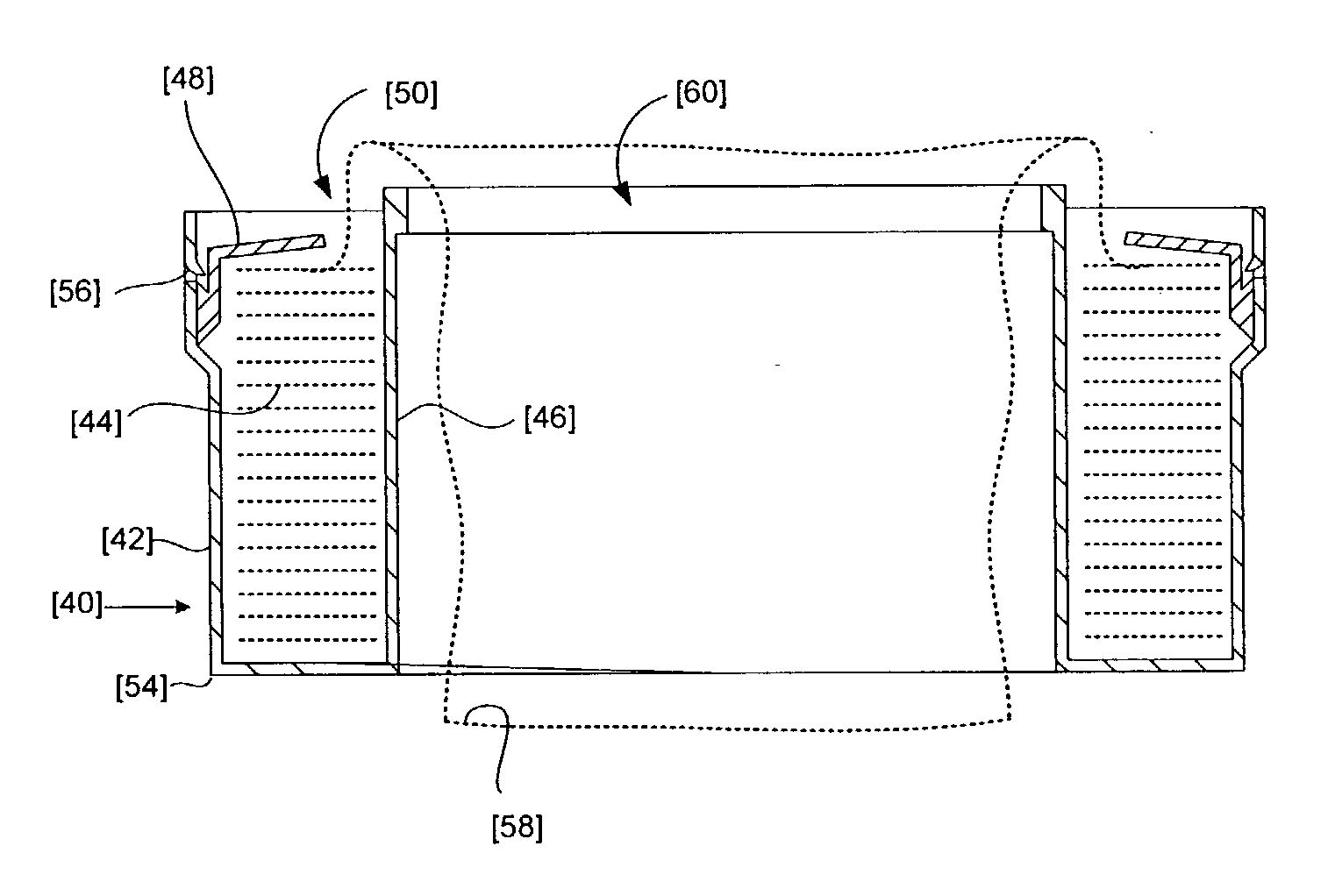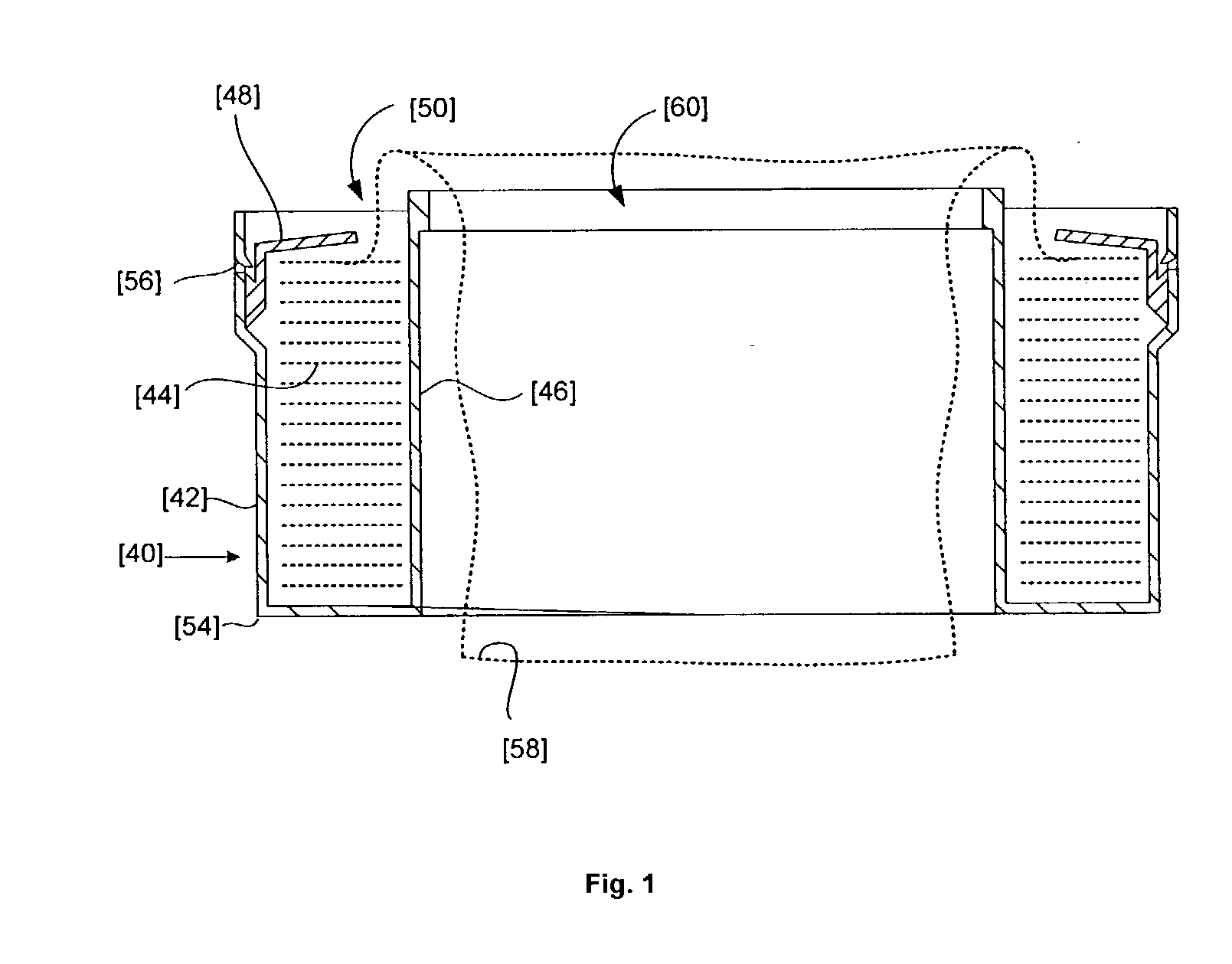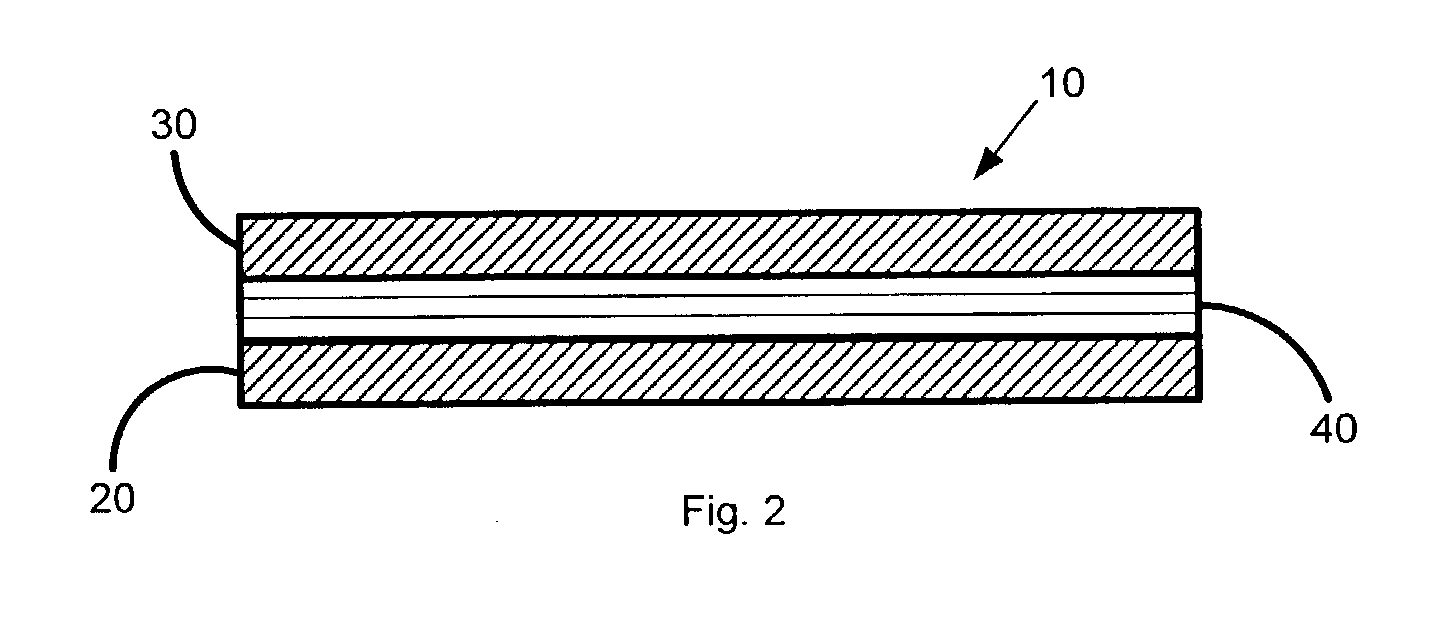Odor transmission-resistant polymeric film
a polymer film, odor-resistant technology, applied in the field of plastics, can solve the problems of difficult plastic formulation of malodor-resistant plastics, inability to incorporate malodor-resistant polymers into particular polymers, and 's structure may be compromised
Active Publication Date: 2003-11-27
PLAYTEX PROD INC +1
View PDF5 Cites 53 Cited by
- Summary
- Abstract
- Description
- Claims
- Application Information
AI Technical Summary
Problems solved by technology
Many malodor counteractants can not be incorporated into particular polymers during molding because of physical compatibility problems, because they are degraded in the molding or mixing process, and / or because the integrity of the plastic's structure itself may be compromised by the incorporation of any particular counteractant into the plastic.
Therefore, the formulation of plastics with malodor counteractants is quite difficult.
The use of PVDC in general waste disposal bags, however, has not been adopted due to numerous problems associated with the plastic.
First, PVDC is expensive and a difficult material to handle.
Second there are growing safety and environmental concerns regarding the safe disposal of PVDC, particularly by incineration.
Further, its highly crystalline structure makes the material crackle and rustle when it moves, or is bent, properties that may not be ideal to consumers.
A particularly difficult trash to retain for ultimate disposal is diapers.
The cumulative odor of diapers being stored within the container frequently reaches such an offensive level that the diapers must be disposed of before the container is full.
The latter leads to a large use of container liners such as bags, and excessive emptying operations.
However, a single material has not yet been identified that can adequately retard the transmission of both moisture and malodor in combination with the mechanical properties needed to convert the film into cassettes without splitting or tearing.
Furthermore, the latter may be due to fact that enclosure of the counteractant-treated tubular flexible plastic in a relatively sealed environment reduces the rate at which volatile malodor counteractants volatilize into the atmosphere.
Method used
the structure of the environmentally friendly knitted fabric provided by the present invention; figure 2 Flow chart of the yarn wrapping machine for environmentally friendly knitted fabrics and storage devices; image 3 Is the parameter map of the yarn covering machine
View moreImage
Smart Image Click on the blue labels to locate them in the text.
Smart ImageViewing Examples
Examples
Experimental program
Comparison scheme
Effect test
Embodiment Construction
[0049] While the invention has been described with respect to preferred embodiments, those skilled in the art will readily appreciate that various changes and / or modifications can be made to the invention without departing from the spirit or scope of the invention as defined by the appended claims. All documents cited herein are incorporated in their entirety herein.
the structure of the environmentally friendly knitted fabric provided by the present invention; figure 2 Flow chart of the yarn wrapping machine for environmentally friendly knitted fabrics and storage devices; image 3 Is the parameter map of the yarn covering machine
Login to View More PUM
| Property | Measurement | Unit |
|---|---|---|
| plastic thickness | aaaaa | aaaaa |
| plastic thickness | aaaaa | aaaaa |
| length | aaaaa | aaaaa |
Login to View More
Abstract
A malodor transmission-resistant plastic finding employment in cassettes housing flexible tubular material.
Description
[0001] This patent application claims the benefit of the filing date of U.S. Provisional Patent Application No. 60 / 373,143, filed Apr. 17, 2002, the entire contents of which are hereby expressly incorporated by reference.[0002] 1. Field of the Invention[0003] The present invention relates to plastic formulated to house malodorous waste in a manner to such that the plastic is resistant to the transmission of malodors from the waste to the ambient air.[0004] 2. Description of the Related Art[0005] Many waste products produce smells generally found to be unpleasant to the olfactory sense ("malodor"). Malodors are frequently comprised of amines, thiols, sulfides, short chain aliphatic and olefinic acids, aldehydes and esters. For example, indole, skatole, and methanethiol are found in toilet odors, perpidine and morpholine in urine, and pyridine and triethyl amine in garbage odors, such as fish.[0006] Numerous approaches have been proposed to reduce the perception of malodors from waste...
Claims
the structure of the environmentally friendly knitted fabric provided by the present invention; figure 2 Flow chart of the yarn wrapping machine for environmentally friendly knitted fabrics and storage devices; image 3 Is the parameter map of the yarn covering machine
Login to View More Application Information
Patent Timeline
 Login to View More
Login to View More Patent Type & Authority Applications(United States)
IPC IPC(8): B32B27/32B32B27/34B65B67/12B65F1/00B65F1/06B65F1/12B65F1/16B65F7/00
CPCA47K11/02Y10T428/1341B32B27/32B32B27/34B65B67/1277B65F1/0006B65F1/0053B65F1/06B65F1/062B65F1/125B65F1/1646B65F7/00B65F2001/1669B65F2210/167B65F2210/1675B65F2240/132Y10T428/1334A47K11/026Y10T428/31743Y10T428/31725Y10T428/3175Y02A50/30
Inventor CHOMIK, RICHARD S.KNUTH, ROSEMARYYEAGER, CARYLYOHO, MARK
Owner PLAYTEX PROD INC
Features
- R&D
- Intellectual Property
- Life Sciences
- Materials
- Tech Scout
Why Patsnap Eureka
- Unparalleled Data Quality
- Higher Quality Content
- 60% Fewer Hallucinations
Social media
Patsnap Eureka Blog
Learn More Browse by: Latest US Patents, China's latest patents, Technical Efficacy Thesaurus, Application Domain, Technology Topic, Popular Technical Reports.
© 2025 PatSnap. All rights reserved.Legal|Privacy policy|Modern Slavery Act Transparency Statement|Sitemap|About US| Contact US: help@patsnap.com



